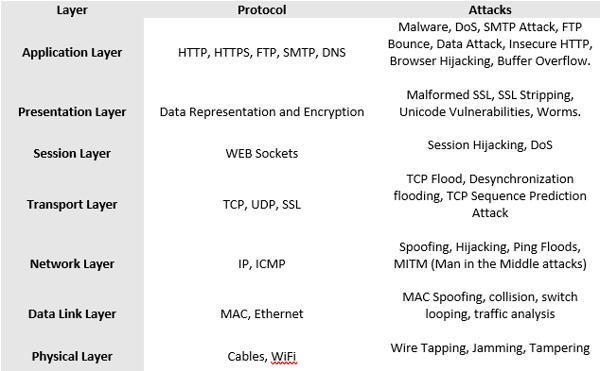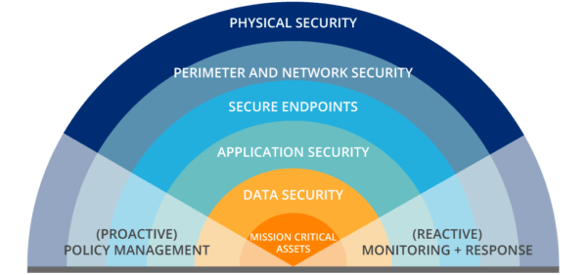 Chris Georgiou
Presales Specialist at Dicker Data
Chris Georgiou
Presales Specialist at Dicker Data
Multi Layered security – also known as "multi-level security" or "defence in depth", is a concept of protecting multiple threat vectors through multiple layers of security. Whether this is done at the application layer, network layer, physical layer, or any other layer; all layers possess entry points for malicious activity. Protection and prevention across all the layers decrease the risk of a cyber-attack, or malicious activity.
The standard network communication structure via the OSI layers is still present and all layers in the OSI 7 layer model possess possible security breaches.
See table below for layers of security and threat vectors.

It’s a challenge for organisations to maintain multi-layered security defences for many reasons. What confuses this challenge is that the techniques and attack vectors that cybercriminals depend on are continually advancing. Many breaches occur through human error or businesses not investing in up to date or complete security solutions protecting the business. This means the threats such as ransomware and phishing impacting the business is very high.
The biggest challenge with a multi-layered security strategy is to deploy the right solutions at the right levels, using the most effective products, whilst keeping the economic expense and ongoing monitoring and maintenance to a cost effective and achievable level. Not only does technology play a role in preventing breaches, but the human factor is a considerable one. Phishing and identity theft breaches cost individuals and organisations immensely financially as well as their reputation.
There is a distinct advantage of implementing your security posture across multiple layers. There is a need for security to extend to both the network and the software layer whether it’s bought off the shelf or developed in house. With each layer of security that is implemented, there is less and less access making it more difficult to infiltrate the system. Each layer running individually is not enough to cover most threat vectors. A combined set of layered security defences strengthens the defence and enforces a resilient defence system.
The multiple layers of security ensure that the defence component protects the data at that layer of any failure or loophole in the system. In a multi-layered security strategy, every layer focuses on key areas of security to prevent breaches. Each individual layer in the multi-layered security strategy focus on areas that are vulnerable to cyberattacks at that level.
The common types of solutions across security layers include:
There is no single silver bullet to provide complete protection across all layers. A combination of various solutions at various layers is required to minimise the risk. Each individual organisation will have a different requirement to the next organisation. Protecting the layers comes down to implementing not only defences at the various layers with technology, but the human factor also needs to be taken into consideration. Education and influences around procedures and best practices is recommended in any organisation.
Any organisation is susceptible to cyber-attack, regardless of its size, location, operational model and sector.
There is no escaping the fact that cyber security threats will remain part of modern business, and the risks associated with this need to be managed moving into the future.
A multi-layered security approach should be made an important element of the overall IT security strategy in every organisation.
“Secure your Everything”. 
The Dicker Data Security Software team can help you identify correct solutions according to your requirements. With access to our list of industry leading security vendors, we can customise tailored solutions. Find out more here.

17 December, 2025 - 9 min read
As 2025 draws to a close, we’ve taken a moment to reflect on the... Read more

12 December, 2025 - 5 min read
We were thrilled to host the third edition of the Dicker Data... Read more

10 December, 2025 - 2 min read
In today’s fast-paced, AI-driven world, your customer's... Read more
Subscribe to the Dicker Data blog
for regular updates and insights

Dicker Data (ASX: DDR) is an Australian owned and operated, ASX listed hardware distributor with over 46 years experience. Our dedicated sales and presales teams are comprised of experienced product specialists who are focused on using their in-depth knowledge to help customers tailor solutions to suit their client’s needs.
Phone: 1800 688 586
Email: sales@dickerdata.com.au